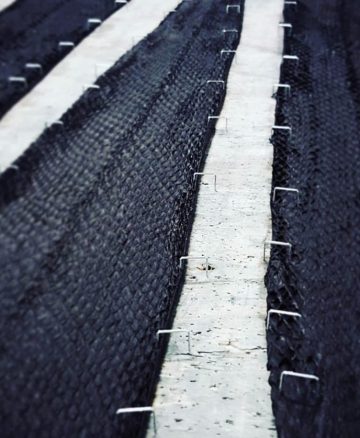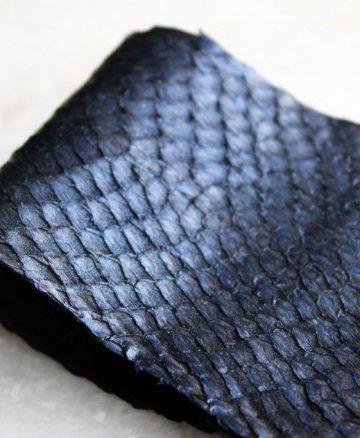
THE BEGINNING
MÆYA Amsterdam is founded in 2016 by four friends with a passion for fashion and sustainability. It is an Amsterdam-based label born under the mindset of using innovative materials to create luxury goods.
Today we are continually confronted with climate changes due to environmental pollutants.
In the light of improving the environment, we were looking for a material that was both fashionable and conscious. This is when we found fish leather. We believe that fish leather is a premium option for making quality leather goods.
Sustainable fish leather is the main material that is being used in our products. It finds it origin in Iceland and it has many appealing characteristics. It is a durable replacement for cowhide because the production process is far less harmful. In addition, our fish skins are a byproduct of the fish processing industry that normally would be thrown away, therefore it is a repurposed material that otherwise would be discarded. Other advantages of the fish leather can be found under the heading “material”.
Our designs are both complex and simple, and they all have an elegant and timeless look. Because of the quiet unknown material, a lot of time and technique is used making this product. Therefore our bags are true, sincere craftsmanship.
THE MATERIAL
There are many sorts of fish leather, but we choose to work with salmon leather. It appealed to us the most because of its elegant and refined look.One of the advantages of salmon leather is that it is almost three times stronger than cow leather and at the same time is very flexible and soft. In normal leather the fibers run in one direction, but fish leather has a natural cross-fiber structure. As a result, the material is very sturdy. Besides all this, fish leather is a sustainable alternative to cow leather due to the lack of waste materials produced and because during the tanning and dyeing process the least amount of chemicals are being used.
HISTORY

The use of fish leather for clothing is an ancient practice. The Hezhe ethnic tribe or “Nanai people” of the Far East is known as the ‘fish leather tribe’, for they mostly subsisted on fishing and would make their traditional clothing out of fish leather
PRODUCTION

The fish leather is produced environmentally friendly in two different ways: it is a by-product of the fishing industry, utilizing raw material that would not otherwise be used; and the production process makes use of renewable hydro and geothermal energy. The tanning and dyeing processes used for fish is far less aggressive to the skin and environment than that used for mammal leathers, which require strong chemical products that release gasses such as hydrogen sulfide (an explosive, corrosive, and flammable gas) to strip the hairs from the hide. Since fish have no hair, this step is unnecessary. The scales may be removed, but this is never through chemical processing.
ORIGIN
